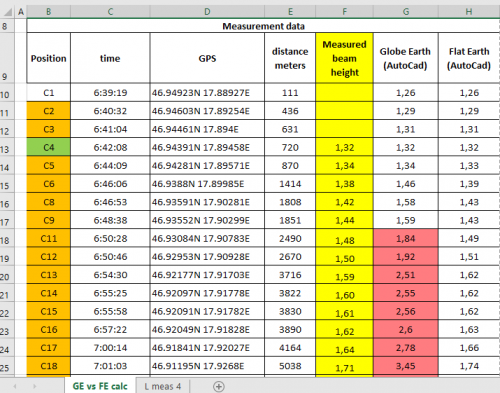Leaderboard
Popular Content
Showing content with the highest reputation on 12/15/20 in all areas
-
I’m on the autism spectrum myself. The problem here is that we can’t isolate a specific sensory stimulus at the exclusion of everything else. So in this particular example, the stimuli coming from eye contact and his spoken words are both present, and both equally prominent simultaneously, which makes it difficult to focus on the actual content of either one of them. Averting eye contact simply makes it easier to focus on the person’s speech, so a lot of autistics will do this unconsciously and automatically. A better example would be a room full of people all talking to each other; it is very hard for me to just focus on what the person in front of me is saying, since I am forced to equally register all the other conversations in the room at the same time. There is no functioning filter there to limit and focus sensory stimuli - which is why we get sensory overload in certain stimuli-rich environments. Note that this is a matter of degree - different environments affect different autistic people in different ways and degrees.4 points
-
I think the helicopter is below the "true horizon" in those videos (represented by the lake surface), and hills behind it make the visible horizon higher. The simplest explanation is the video producers fabricated the shot because they didn't have the footage that they wanted to illustrate the narrative. That's pervasive in modern media, and only increasing. They add, remove, combine, edit, recolor, enhance, and create the shots they want if they don't have them. They basically assemble the story they want to tell, from pieces of the story they shot. Scenes are not always in the right order or even in context, and here you have proof that they're edited. Discovery Channel shows like this aren't video evidence of scientific experiments conducted by scientists, they're science-themed entertainment. Another common thing you'll see is footage of insects, or stop-motion of plants growing, and you'll hear loud, clear chewing noises, or the "sound of plants growing", but most of the time it's just a separate sound track added in post exactly like they would do for movie sound effects. Everything is edited and processed and repackaged these days. The raw footage would be boring and dry and not fit the exciting action film percussion soundtrack. I imagine that editing is such a common practice that the producers might not have even considered that people would treat it as scientific evidence. I think the "target circle" was added in post as well. I don't think you looked very closely, they're not just the same birds, they're the same pixels frame after frame. You can see it in OP's images. They're the same shot, and one is edited. That's not something I'd expect to see on Discovery. But maybe they could blow something up when they're talking about the laser, and say "Now that's what I call doing science!"3 points
-
I stand by my comment, if you track down data, you do have to check the source and figure out on what they are based on. If you are curious about things like food supply dominance, there are various sources you can look at. Believing your gut without doing research is just plain lazy. Edit: to make it more concrete. Say I assume that I think that Wal-Mart has a monopoly in groceries. So I would think that the first thought would be: is it really true? Shortly followed by how can I find it out? What is the right metric to look at? E.g. revenue, market share and so on. If I was at least bit curious about the matter I would look at what data is out there and whether my assumptions are true. If I start with the assumption of being right it would mean that I am more concerned about being right or pontificate my points rather than being curious about how things are and how my thoughts line up with reality.2 points
-
I see there are a few creationist posters here from time to time. So here is a very small amount of the evidence for common ancestry with the rest of the apes: (1) Chromosome Banding Patterns Here is Human Chromosome 2, alongside Chimp, Gorilla and Orang-Utan 2p,2q you can see there that the banding patterns are all pretty much the same. one major difference of course if that the other apes have 2 chromosomes there, whereas humans only have 1. However when we examine the human chromosome in more detail (which you can't from those diagrams) you find that in the centre of the human chromosome we have telomere like structures, which normally exist only at the ends of chromosomes. telomeres are a bit like the cellular lifetime counter, and a bit is lost on each cellular reproduction (with the exception of sex cells and cancer, which repair their telomeres) so if a telomere is '=' and a centromere is '8' (that is the bit of the chromosome containing the genes and so on) then the chimp, gorilla and orang utan 2p and q would look like ===888=== and ===888=== but the human 2 looks like ===888====888=== and you can still see this now in humans. Telomeres are highly conserved sequences, which are primarily the same between all organisms in a group, for example all vertebrates have TTAGGG repeating over and over. In primates, between 300-5000 times. Ajacent to these regions are other regions of repeats called pre-telometric regions, which are highly variable, and vary significantly even within a species, but can be recognised between members of a species and closely related species. In Humans, further evidence for a chromosome fusion, the order of these sequences (in the middle of the chromosome between the two centromere sections) pretelomeric sequence, a telomeric sequence, an inverted telomeric sequence and an inverted pretelomeric sequence. so even these features are conserved. note that only the 2p centromere functions now. the centromere of 2q, while remaining very clear that it was a functioning centromere, is no longer the point where the two chromatids join dusing cellular reproduction. This sort of analysis is not limited to chromosome 2, but can be applied to the entire karyotype: The above image is just of humans and chimps. (2) Endogenous Retroviral Sequences. Retroviruses are a class of viruses that have their genetic material in the form of RNA and consist of groups such as the oncoviruses (e.g. HTLV-1) and lentiviruses (e.g. HIV). Normally DNA is transcribed into RNA before being read in order to produce proteins, however retroviruses use Reverse Transcriptase in order to take their own RNA and integrate it into the organisms own DNA. Like all genetic processes however, there is a risk of inaccuracy, and sometimes a retrovirus may become crippled by a mutation during reverse transcription, and hence may not be able to reproduce itself as a normal virus would. Endogenous retroviruses may embed themselves into any cell in the body, and this includes the sex cells (gametes) as well as the normal body (or somatic) cells. If an ERV occurs in a sex cell that goes on to fertilise an egg (or be fertilised by a sperm) then the ERV will be present in every single cell of the new organism, including it's sex cells (well since it will be in one chromosome, initially it will only be in 50% of the sex cells). Now one of the most important theories within evolution is that of random genetic drift, and this is an element of evolution that was only understood after the discovery of DNA. Genetic drift is a stochastic (statistical definition) process in which a particular allele (version of a gene), or bit of the DNA, will randomly increase and decrease in presence in the population, provided there is no selection pressure on that particlar allele or section of the DNA, and eventually it may become fixed within the population i.e. when it is present in all members of the population. This may happen to an ERV which became embedded within one particular individual; via random genetic drift it may become embedded in the whole breeding population. This occurs more rapidly in smaller breeding groups than large breeding groups. The next step is the consideration of ancestry. If we have a group A, all of whose members have a particular ERV, we will call this ERV 'E1', and this group splits into 2 new groups, B and C, perhaps by a river forming in the middle of the group across which none of the organisms can cross, now both groups B and C will still have this ERV in all members. Now let us say that a new ERV is introduced into a member of group B and becomes fixed in group B. all members of group B will have this new ERV, which we will call 'E2'. now when we look at populations B and C, we see that B has both E1 and E2, and C has only E1. this means that E2 was introduced to the population B after B and C became separated. If B furter splits into Bi and Bii and Bii has a new ERV 'E3' fixed within its poulation, we find that Bi has E1 and E2, Bii has E1 E2 and E3 and population C still only has E1, so we can build up a tree of what order these different groups broke apart. An important point to note, is that we should never find a retrovirus shared between, for example, Bii and C alone, since the common ancestral group between Bii and C is the same common ancestral group with Bi: if an ERV becomes fixed in A, then all of its ancestors should have the ERV. By examining ERVs, we can look at ancestral links between these populations. if we look at the presence of retroviruses within a population we can find when a particular group broke away from a different group due to the presence of the retroviruses within the group. here is a chart of ERV distributions in the primates, and the phylogenetic tree constructed from it the above diagram is from the following paper: Lebedev, Y. B., Belonovitch, O. S., Zybrova, N. V, Khil, P. P., Kurdyukov, S. G., Vinogradova, T. V., Hunsmann, G., and Sverdlov, E. D. (2000) "Differences in HERV-K LTR insertions in orthologous loci of humans and great apes." Gene 247: 265-277. also we have fig 3: Results of the 12 chimeric retrogenes insertional polymorphism study. The chimeras’ integration times were estimated according to the presence/ absence of the inserts in genomic DNAs of different primate species. Note that u3-L1;Ap004289 is a polymorphism within the human species -- it integrated since the LCA of humans. Ref: Buzdin A, et al. The human genome contains many types of chimeric retrogenes generated through in vivo RNA recombination. Nucleic Acids Res. 2003 Aug 1;31(15):4385-90. A common creationist objection to the ERV concept is that of multiple insertions i.e. the idea that a virus might insert itself into the same place in different organisms and it becomes embedded in both organisms i.e. a human might be infected with E1, and this ERV becomes embedded in the human population, and a chimp might become infected with E1 and this also becomes embedded, however there are multiple problems with this hypothesis. First and foremost, Of a genome that is 6 billion bases long, what are the odds that a ERV will be inserted into the same place? 1 in a 6 billion, right? Now, if there are 2 such ERVs, the odds are 1 in 6 billion times 1 in 6 billion for both being inserted into the same places by chance. If there are 3, you must multiply by another 1 in 6 billion. Now, since you have 12 such insertions in humans compared to the common ancestor, you have just passed the creationist number for it having occured by chance! By creationism's own criterion, their argument is invalid. The only creationist rebuttal to this is that there are hot spots, where the odds of a virus being inserted are slightly higher than other places, but there are still a great number of hotspots throughout the genomes, and given the above points, there is no reason why multiple infections would result in the same ERVs being inserted in the same locations with the same crippling errors and showing the same pattern of change with time. Again if there are multiple hotspots and multiple infections, there is no reason that there should not be ERVs that do not match the phylogenetic tree. again we see no deviances from expected inheritance patterns. Secondly, there is no good reason as to why this would form the phylogenetic tree that it does. Even if there was a virus that was simultaneously capable of infecting every kind of primate from new world monkeys through to humans, there is no reason to think that this virus would actually infect every available primate and become fixed in every single population. we might well expect several to be missed i.e. we might see spider monkeys, bonobos, chimps and humans infected, but not gorillas or Orang Utan. we do not find these spurious distributions of ERVs. Thirdly, we just do not find these sorts of retroviruses that have such a wide species affinity. and again, even if we did, there is no reason that the retroviruses would form the phylogenies that they do. Fourthly, the retroviruses are crippled, but still identifiable as retroviruses. the retroviruses that we see in different species are crippled in the same way. If the retroviruses are the result of multiple infections, then there is no reason to expect the retroviruses to be crippled in the same way in different species. Finally, additional alterations have been made to the ERV sequences over time. Since the ERVs themselves are not selected for or against, they themselves may be altered due to the same kind of genetic drift that caused them to be embedded within the population. we see inheritance of these changes too, that also match the phylogenetic tree of the presence of different ERVs. Other Phylogenetic trees can be constructed in similar fashions by looking at ALU sequences (long sequences of repeating DNA) and transposons (kind of like internal viruses that only ever exist within the nucleus and copy themselves around the DNA) (3) Transposons. I will be brief with transposons since most of what needs to be said has already been said in the ERV section. Transposons are a form of internuclear parasite; they are sections of the genome that can copy and paste themselves around the rest of the genome. Again these transposons may become fixed within the population, and form the same sorts of phylogenetic profiles as ERVs. transposons are however completely independent from ERVs and function with a different mechanism (i.e. they do not use reverse transcriptase, they do not have viral coat proteins and they cannot cross cellular boundaries). The only possible mechanism of infection of another organism is via germ line cells - you may infect your children in other words, but nobody else. In this case there is absolutely no possibility for multiple insertions. The same phylogenetic trees can be constructed from independent analysis of transposons. It is these transposons which are responsible for much of the intergenic DNA and are also used in DNA fingerprinting, since cutting of certain chunks of DNA results in the same patterns for a given individual.1 point
-
https://en.wikipedia.org/wiki/Basket_of_deplorables People are the way they act. Maybe not based on a single event (such as an out-of-character heat-of-the-moment slur), but if a person exhibits racist behavior for years, they are racist. No need to sugar coat it. We are not talking about children for whom we are trying to develop into good adults. These people ARE the way they act.1 point
-
Yes, it's definitely an ad hominem attack. I still see the same pattern of posts on this site over many years, where newer users must deal with people who like "crackpot bashing for sport". If one of the regulars posted a question about a suspicious video about science, would you treat their post the same way? Would you focus on their name while completely ignoring the content of the post? Did you even read the post, or did you conclude all you needed to know by the title, nickname, and some assumptions? What exactly is "not even wrong" about OP's post? "you seem very tacky"??? Why do this?1 point
-
Actually no, the mechanism to how they are generated are so vastly different that it has severe impact on their effect and production. In short a RNA vaccine holds the promise of rapid vaccine development. Once you sequenced a virus you could just identify an unique stretch, synthesize it and put it into a lipid shell. An attenuated vaccine requires to cultivate and purify the virus, inactivate them in a way to render them harmless but still retain immunogenicity (which is tricky and takes a long time). Using parts of the virus requires again a genetic step but then you still have to express the protein in vivo or in vitro, purify it and then use the resulting product as a vaccine. Think about it that way, instead of raising a pork and roasting it, or even just cut off pieces of it (which is actually not a a good example, it is more like raising just a leg instead of a whole pork) you just take a picture of a hog, and then use the digitized information to print out something that you can just eat (yes, stupid analogy, but it is that different). All antigen production happen within your body now, instead of requiring to produce them.1 point
-
1 point
-
I read a little bit of this article and have no opinion just yet on its validity; however, many years ago, I recall an online Q & A session with an autistic fellow who was particularly eloquent when allowed to type his responses. I recall someone asking why eye contact is so generally difficult among autistic individuals. He said, as I recall his reply, that he could not look at a person and listen to that person at the same time. What I understood from his reply was that he could not process visual and auditory stimuli concurrently without a type of sensory overload. If one is positing autism brain theories, those theories should provide a cogent sensory-to-response basis in brain function or structure for atypical behaviors such as a inability to concurrently process divergent stimuli.1 point
-
As far as I can see the steps described in the paper can be implemented in Python. But to know if you should use python and which parts of the project that may benefit from other tools a more thorough investigation would be required before I could make a statement. It may also depend on how much you intend to implement. Example: I note that data is preprocessed using the MAIAN tool (outlined in the paper) and that MAIAN depends on Solidity Compiler. Those tools may or may not be using python but to what extent that affects you is for you to investigate. How to implement and which libraries to use is another matter depending on details not yet discussed. I could of course provide you with a list of popular python frameworks as of 2020, there are numerous such lists available in any search engine you may want to use. But then you would still be left with sorting out which combination of the frameworks that suits your needs. The task you are asking about going to be solved in a single framework or library. Personally I postpone such decisions (in commercial projects) until later in a project. In other cases specific requirements may tell me what to do, for instance if I am consulting a team that already run everything on .NET I would evaluate Azure products first.1 point
-
1 point
-
1 point
-
I'm not a flat earther, and what you are doing is called Ed Hominem (a strategy where the speaker attacks the person making an argument rather than attacking the substance of the argument itself). Doesn't it bother you that people on a formal scientific channel have to use fakery in order to support their scientific claims? It's still important, check this: https://www.forbes.com/sites/trevornace/2018/04/04/only-two-thirds-of-american-millennials-believe-the-earth-is-round/?sh=602deff27ec6 "Only Two-Thirds Of American Millennials Believe The Earth Is Round".0 points
-
Dear Visitors we would like to introduce you our laser curvature experiments. We are looking for the curvature on the surface of the lake Balaton in Hungary with special laser technology to detect the supposed curvature on the water surface. How much is the curvature of earth on the distance of 77kms? (47.8 miles) 465 meters! (1526 feet) that means that an object this tall in one side of the lake must not be seen from the other side. Online curvature calculator: https://dizzib.github.io/earth/curve-calc/?d0=47.845581802249&h0=0&unit=imperial But is that assumption of GE curved water surface model true? We have conducted a series of experiments and surveyed Lake Balaton in western Hungary, which is a shallow (average depth 3.3 m), large (597 km2 ) area. To what extent does the lake resemble a level surface? The airborn LIDAR laser scanner measurement in 2013 Figure 2. (a) Map of lidar-measured ellipsoidal water surface heights (inside flight strip outlines) and modeled gravity potential isosurface height (background raster) with the same elevation color scheme. Inset shows detailed height distribution of water surface measurements, histogram refers to lidar measurements (not to gravity potential isosurface model). (b) Map of lidar-derived normal water surface heights, obtained by correction with local deviation of LMLL and local quasi-geoid height. Histogram refers to water surface normal heights. On Lake Balaton, currents are driven by wind forcing and by seiche while thermal convection remains hardly observable (Muszkalay, 1973). The flow of water from the tributaries towards the outlet is also very weak, because significantly more water leaves the lake through surface evaporation than through the outflow. The rule of thumb for air pressure response is 1 cm decrease in water level for 1 mbar increase in air pressure (Ponte and Gaspar, 1999). However, this only applies to the open ocean and after a period of 1–2 weeks. Since the lake was very shallow, most of the air pressure is directly forwarded to the lake bottom. Therefore we assume that air pressure changes could not have influenced the local lake level Lake tides are known to have amplitudes of up to 10 cm in larger lakes (Trebitz, 2006). In case of Lake Balaton, the shallow depth and the relatively low water volume of the lake suggest this effect would be even smaller. Due to its fresh water, shallow depth (3.3 m avg), limited in- flow and small water volume (2 km3 ) compared to its surface (600 km2 ), Lake Balaton experiences very limited variations in water density. There is no thermocline, warming and cooling can only create maximum vertical temperature gradients of up to 1.1 ◦C m−2 , and horizontal differences in surface temperature between basins have been documented to remain less than 3 ◦C (Virág, 1998). The salinity of the water is also quite constant over its area and over time, so no major changes in density are expected. The height effect of local warming or cooling can dissipate relatively quickly on this scale, therefore no contribution of density change to lake topography can be expected. Both in the cases of the 2013 LIDAR experiment and the 2016 laser experiment confirmed that standing water has a truly level surface. The result of the new 6kms laser measurement are shown here in the data sheet. Note: that the GE model curved water surface expected laser beam height does not match the observed height. The accuracy of the test is negligable to the difference of the calculated and measured value. Balaton-laser-exp-816-data-sheet-4th-measurement final.pdf OUR NEW 6kms laser measurement: youtube links deleted The airborn LIDAR measurement http://publik.tuwien.ac.at/files/PubDat_228814.pdf The pre-test video Here is an other new video from Mr Thrive and Survive youtube channel - talking about our new 6kms laser measurement: Please ask questions-1 points
-
It's Ad Hominem not "Ed Hominem" Also there is no merit in adressing the substance of this post as it's "not even wrong" Plus you seem very tacky about defending a flat earth crackpot, especially for someone with a nickname like yours. Are you sure youre 100% frank with us Ed?-1 points
-
Not so. Truth, taking strikes is the cross. "Simply looking up," these days, is very unnatural; and against nature.-1 points














